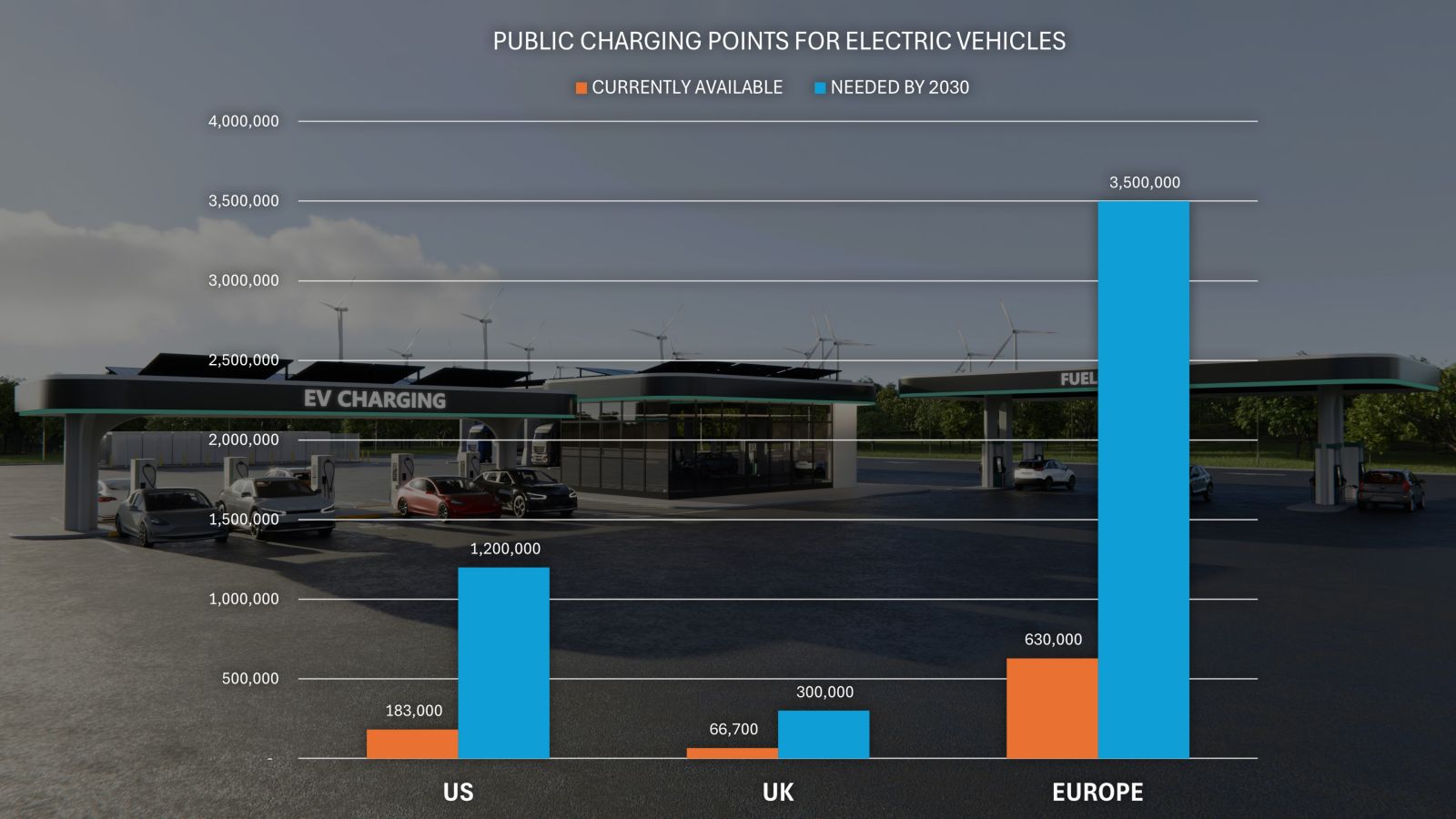Global EV Charging Infrastructure Needs to Grow More Than 500% by 2030
Key markets in the electric vehicle (EV) transition are falling behind in their stated goals for public charging infrastructure, according to latest figures on World EV Day. The data reveals that the US, Europe and the UK are more than six times behind the number of plugs needed to meet growing EV demand by 2030. The US, the world’s second-largest EV market, has under 200,000 publicly available charging ports, with over one million more needed by 2030, according to McKinsey, representing a 550% increase. Europe needs a 5.5-fold increase to the 630,000 public charge points currently available across the continent to meet European Commission 2030 targets. The UK requires a near 350% increase to scale its charge points from just under 70,000 to 300,000 by the end of the decade.

Yet at current installation rates, these key EV markets will fail to adequately facilitate the EV transition. Europe, for example, is currently three times behind the annual installation rate needed to meet 2030 targets. This deficit in EV charging points represents a considerable opportunity for fuel retailers. Konect, an innovator in electric vehicle charging established by global retail and commercial fueling leader Gilbarco Veeder-Root (GVR), believes that existing fuel retailers are in a prime position to plug the gap, thanks to their optimum blend of location and amenities.
Om Shankar, Vice President & General Manager, Konect, said: “At current installation rates, key global EV markets won’t meet the public charging infrastructure needed to meet growing EV demand. We know that most EV drivers currently plug in at home, but there’s a second cohort of buyers, beyond the early adopters, that don’t have the same facilities.
“As EV technology improves, costs go down and range goes up – more people will make the switch. We must match this progress with the right amount of readily available public charging. We need some logical thinking on the placement of new charge points – ideally, locations that are already familiar and convenient for car drivers. That’s the golden opportunity for the existing fuel retail network.”
However, the industry needs to remove key blockers to effective service in order for fuel retailers to build a business case for reliable and profitable EV charging. In a survey of multiple charge point operators, Konect discovered that over 71% find recording charge-point downtime at their sites challenging, with well over half (57%) identifying support from service partners as the biggest blocker to improved uptime.
“We know that providing an easy and reliable public charging experience is critical to the electric vehicle transition. Konect has the technology and expertise to support fuel retailers and CPOs through the electrification transition by delivering reliable, user-friendly infrastructure for drivers, while boosting ROI and enhancing time to value,” Shankar added.
EV charging at the forecourt
Konect provides wrap-around support, including consultancy, installation, maintenance and customer service – offering a flexible, streamlined solution that enables customers to future-proof their facilities. The business supports and manages every step of the EV charging journey, including site selection and funding options, providing market-leading hardware and software solutions, and integration with on-site energy storage.
Featuring industry-leading DC fast-charging technology, Konect utilizes a unique dispenser design that delivers a seamless charging experience for businesses and end-users. Defined by a hard-wearing ergonomic design; ease-of-use, and maintenance are central to the charging system. An adaptable 17-foot charging cable provides freedom and flexibility in use, and a high-brightness LCD touchscreen features a fully customizable, intuitive user interface.
The intelligent charging infrastructure is integral to a broader, fully integrated ecosystem. Based on a central cloud-based platform, the network connects multiple on-site facilities – from the charging infrastructure, to localized energy management and off-grid charging solutions – enabling operators to achieve maximum operational efficiency, enhance profitability, and facilitate a smooth transition to electric mobility.
More detail on the Konect business can be found here for the U.S. market, and here for the European market. Further information on Gilbarco Veeder-Root is available here.
Gilbarco Veeder-Root | www.gilbarco.com
Vontier | www.vontier.com












